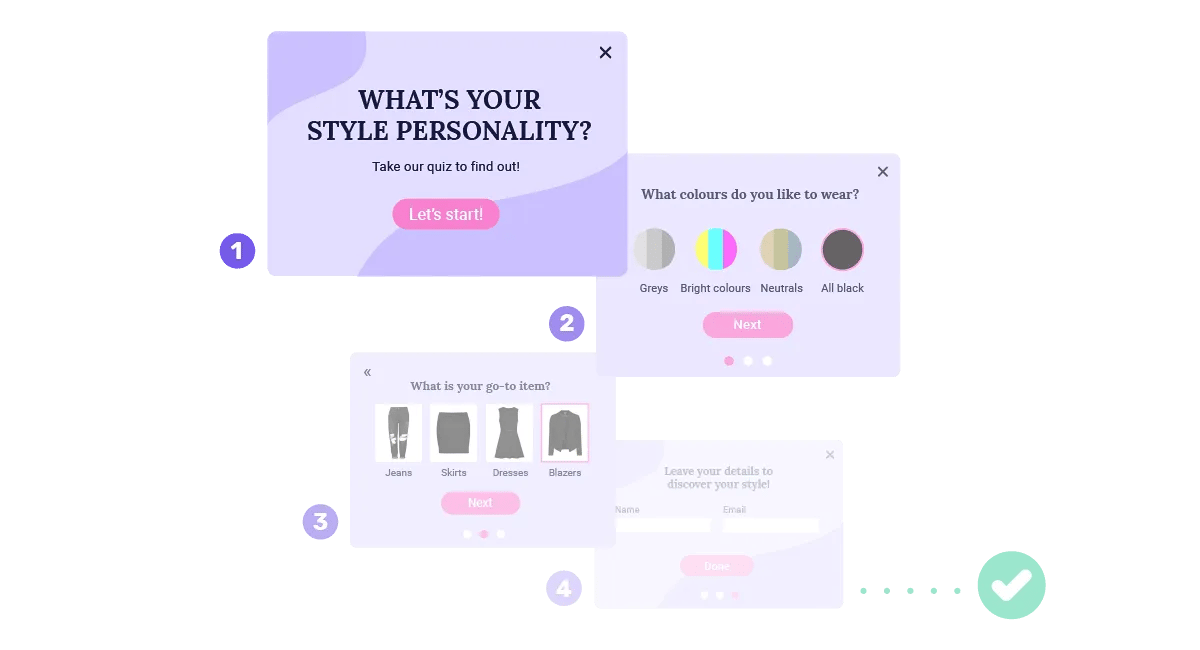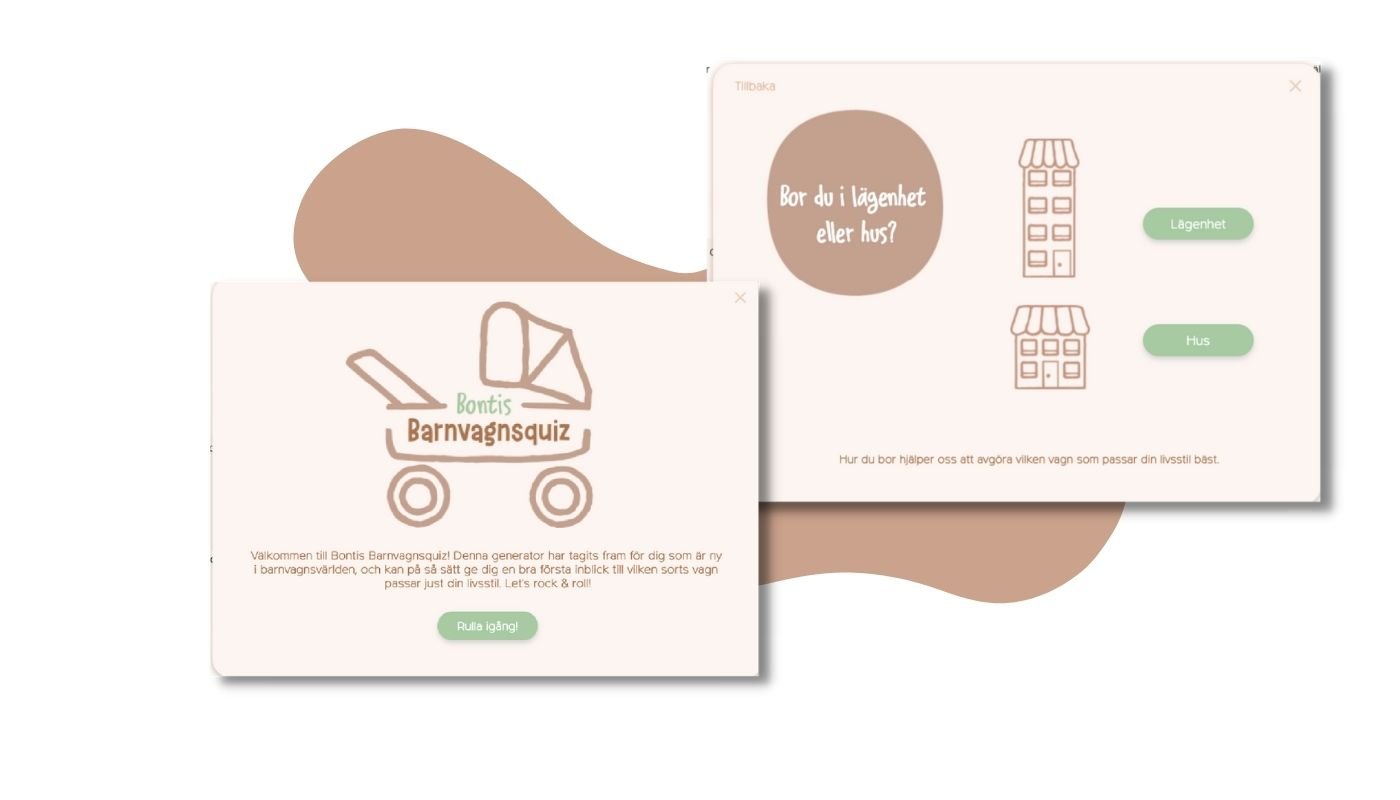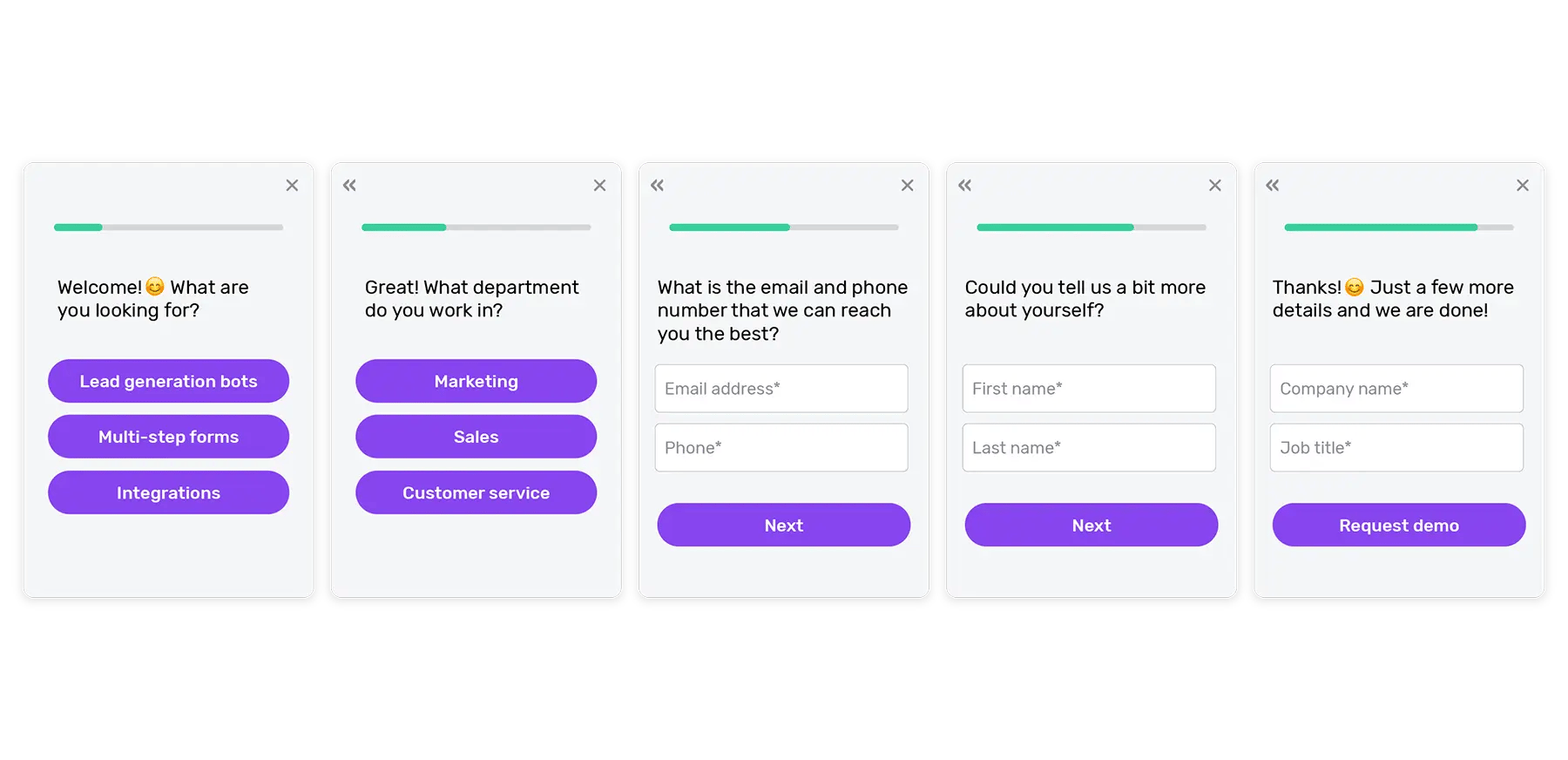Third-party cookies used to be marketers’ secret weapon to targeted advertising and retargeting.
So, what are you to do when the premise of third party cookies is on the brink of extinction? It’s time to look at what should have been plan A all along, first-party data.
And what’s the best way to collect first-party data? Interactive content.

Before we dive into that though, we’ll have to cover some bases.
- What are third-party cookies?
- When will third-party cookies disappear?
- What is first-party data?
- How to collect more first-party data?
- How interactive content helps you collect more first-party data
We’ll answer these questions and help you sweep up the crumbs 3rd party cookies have left behind.
What are third-party cookies and third-party data?
Third-party cookies are sure to be a buzzword for the next year or so as Google and other web browsing giants are abolishing their use. To understand third party cookies, first, you’ll need to understand third party data.
Third-party data is information that an unrelated website collects while a website visitor is browsing different websites. The current website that the website visitor is on actually doesn’t have access to this data, but instead, a different entity owns it and collects it to leverage targeted advertisements.

So, a third-party cookie is a file that is stored on an internet user’s browser that allows this third-party entity, as mentioned previously, the ability to track the user’s online behaviour between various websites.
In terms of online privacy, maybe you can understand why users are outraged by the way their data has been collected and distributed thanks to third-party cookies.
Fortunately, with growing awareness and stricter regulations, many websites are now implementing features that allow users to opt out of third-party cookie tracking, giving them more control over their personal data.
When will third party cookies disappear?
Well, Google isn’t the first web browser to make a stand in banishing third party cookies. You may not have noticed, but Safari and Firefox have already phased out the use of third-party cookies within their browsers back in 2013.
Perhaps the reason Google Chrome’s announcement of deciding to phase out third-party cookies in 2023 comes as a shock is because it makes up over half of the global web traffic.
But, Google won’t be leaving advertisers completely high and dry. Marketers and advertisers will still have the ability to target on an individual level and measure campaigns within Google-owned inventory (like Search and YouTube). They can do this by matching their first-party data to Google’s first-party data.
What is first-party data?
First-party data is the good guy in this equation. Obtaining first-party data via first-party cookies is not going anywhere anytime soon since it directly helps in the customer experience and requires clear consent to obtain.
In contrast to third-party data, first-party data is owned by the website that an individual is interacting with at the current moment. First-party cookies are one method to help the website collect and store this critical information about an individual user’s preferences.

What is zero-party data?
You may have also heard of the term zero-party data. Some sources consider these two types of data as one and the same, while others acknowledge the difference between them.
By definition, zero-party data is information that the customer actively and intentionally shares with a brand. This definition differs from first-party data since it’s not necessarily the data that’s collected in the background of a website based on behaviours.
But for the sake of this blog post, we are also implying that zero-party data is a part of first-party data since it is data you collect from your own website.
Examples of first-party data
So, just to emphasize, first-party data is information that a company collects from its website visitors. Let’s look at some examples of different types of first-party data:
- Log-in details
- Purchase history
- Time spent on a website
- Demographics
- Survey results
- Customer feedback
- Website behaviours
- Shopping cart items
- Interests
-3.jpg?width=603&name=Real-time%20shopping%20cart%20information%20(Basket%20blog)-3.jpg)
How to collect more first-party data?
Over 70% of marketers say that increasing the amount of first-party data they collect is high-priority. Let’s talk about how you can collect more of it.
The key is to make sure that the data you are collecting, and the way you collect it, adhere to General Data Protection Regulation (GDPR) rules. This European Union legislation is in place to give EU citizens more control over their personal data.
With this in mind, you should have the right tools and processes in place to obtain clear consent from the user. In order for an individual to want to give you their data, there also has to be an incentive on the other side of it.
So, what would incentivise users to share their personal information with you? We’re so glad you asked. The answer is interactive content.

How interactive content helps you collect first-party data
Interactive content is not like your typical blog or whitepaper that website visitors passively consume. As the name suggests, users are more engaged with your content and interested in getting something in return.
Here are some specific examples of interactive content you can have on your website:
- Surveys
- Quizzes
- Multi-step forms
Surveys and quizzes
Embedding a quiz or survey on your website can lead to learning valuable information about the website visitor. It’s all about structuring your questions with an end goal in mind.
Do you want to know more about the user’s
- Buying tendencies
- Product preferences
- Demographics
- Budget?
Once you know our goal, you can make sure you ask the right questions.
With this type of interactive content, you can accomplish two things at once. You learn key characteristics about the consumer but then you also can recommend the best product for a user based on the information they share with you.
Another great bonus about utilizing surveys or quizzes is that you could also use them to identify what stage of the marketing funnel the prospect is at.
The user wants to engage with these types of quizzes and surveys because they get information to support their buying decisions.
Here's an example:
Let’s say you sell baby strollers, like one of our giosg customers in Sweden, Bonti.
They invite visitors to answer questions to help the prospect find the best stroller. In the process, they ask questions like
- “Do you live in an apartment or house?”
- “Do you value if your products are sustainable and environmentally friendly?”
- “How much storage space do you have in your home?”
These questions inform the brand of what this user profile actually looks like. It also helps the brand retarget campaigns and pop-ups to this visitor based on their preferences.

Multi-step forms
Multi-step forms are another form of interactive content to use on your website to collect more first-party data. A multi-step form could be great for the lead capture stage when you are offering a website visitor exclusive content for their email address for example.
First, you need to make sure your offer, your lead magnet, is valuable enough to pique the visitor’s interest. Then you’ll want to make your form a bit more dynamic to get the most information from the visitor.

For example, to put the multi-step into multi-step forms, one of the first steps could be giving the visitor an option of two lead magnets to see which one they are most interested in. Then you can collect their email in the next step with the promise of the content.
Then if they continue to click through your form, they could have the possibility to subscribe to your newsletter or be directed to another piece of content that would be interesting to them based on their behaviour so far.
Collect first-party data instead of stressing over third-party data
The truth is, in many ways, first-party data is more reliable. It’s information collected directly from the user, on your own website. This makes first-party data also unique to you since no other company has that same data on that specific customer.
If you weren’t already taking advantage of this type of data, it’s time to put a strategy into action.
Capture the most important information about visitors on your website with interactive content, and you won't even flinch when you hear about the death of third party cookies again.
Ready to create your own interactive content? Book a free demo and learn how to start getting the most out of your first-party data.